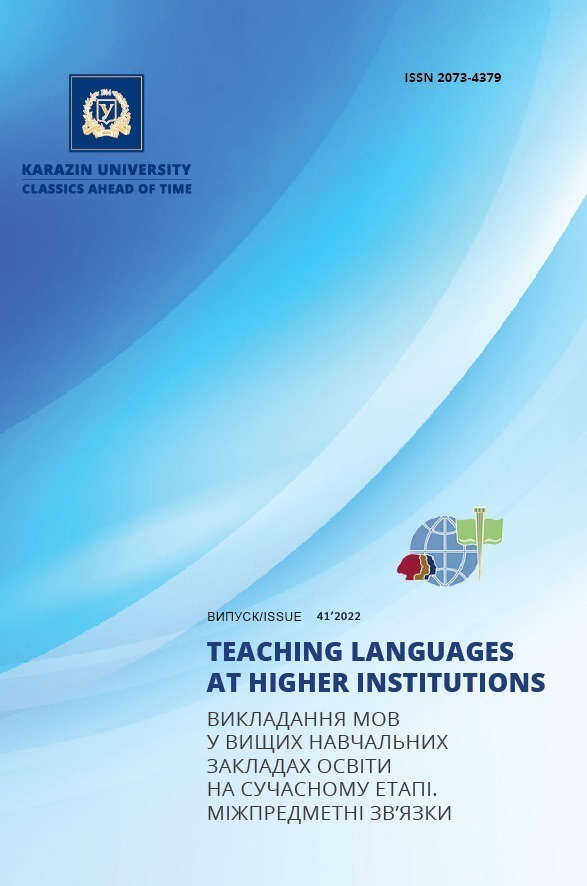Pedagogical grammar as the framework of tefl research. Part 13. Characteristics of environment in native and foreign language acquisition
Abstract
The paper presents the comparative analysis of the characteristics of environment, or input, in the native and foreign language acquisition. The available research provides contradictive data on the role of input in the said acquisition ranging from regarding it as a secondary factor because of its assumed deficiency to underlining the importance of the linguistic experience as the key to the development of grammar mechanisms. The proponents of the latter approach stress the role of the linguistic input, indicate that variable input affects acquisition, focus on the probable relation between the patterns used in input and those used by the language learners. They assume that the input structural complexity can determine the overall timing of the onset of specific language mechanisms. Even those who allow for the dependence of acquisition on the corresponding maturation mechanisms, consider the active interaction of the learner's internal grammatical system with the surrounding linguistic environment to be the most important component of language acquisition. The analysis of interim grammars of learners of English in a formal setting showed that they used similar sets of interim grammar rules, which could be represented in the form of substation tables (ST), The new students who joined the group later, initially had a different nomenclature of their interim rules but eventually tended to show signs of developing the patterns similar to the other learners in the group. This may be explained by the fact that the structure of interim grammar (ST patterns) depends upon the content and structure of the material processed by the students’ cognitive organizers. Identically organized input may contribute to the formation of similar (though not fully identical) interim grammar rules in the students’ minds. Consequently, the content and the structure of the input may have an impact on the configuration of intake, i.e. the part of the foreign language acquisition, which proceeds on the basis of the cognitive organizer’s operation and the subconscious development of grammar mechanisms.
Downloads
References
Chernovaty, L. (1999). Osnovy teorii pedagogicheskoi grammatiki inostrannogo yazyka [The Basics of the Foreign Language Pedagogical Grammar Theory]. Doctor of Sciences thesis. Kharkiv: V.N. Karazin Kharkiv National University [in Russian].
Beehrens, H. (2021). Constructivist Approaches to First Language Acquisition. Journal of Child Language, 48 (5), pp. 959–983 [in English]. DOI: https://doi.org/10.1017/S0305000921000556.
Bloom L., Hood L. and Lightbown P. (1974). Imitation in language acquisition: if, when and why. Cognitive Psychology, 6, pp. 380–420 [in English].
Chernovaty, L. (2016-2022). Pedagogical grammar as the framework of TEFL research. Parts 1–12. Vykladannia mov u vyshchykh navchalnykh zakladakh osvity na suchasnomu etapi. Mizhpredmetni zviazky [Teaching languages at higher educational establishments at the present stage. Intersubject relations], 29–40 [in English]. DOI: https://doi.org/10.26565/2073-4379-2021-39.
Chomsky, N. (1982). Some Concepts and Consequences of the Theory of Government and Binding. Cambridge, Mass.: MIT Press. [in English].
de Villiers, J. and de Villiers, P. (1978). Language Acquisition. Cambridge, Mass.: Harvard Univ. Press. [in English].
Ellis, R. (1989). Understanding Second Language Acquisition. Oxford: Oxford Univ. Press. [in English].
Gerard, J. (2022). The extragrammaticality of the acquisition of adjunct control. Language Acquisition, 29 (2), pp. 107–134 [in English]. DOI: https://doi.org/10.1080/10489223.2021.1971231.
Gleitman, L., Newport, M. and Gleitman, H. (1984). The current status of the motherese hypothesis. Journal of Child Language, 11, pp. 43–79 [in English]
Horgan, D. (1978). The development of the full passive. Journal of Child Language, 5, pp. 56–80 [in English].
Ingram, D. (1992). First Language Acquisition. Cambridge: Cambridge Univ. Press. [in English].
Ingham, R. (1993). Input and Learnability: Direct-Object Omissibility in English, Language Acquisition, 3 (2), pp. 95–120 [in English]. DOI: https://doi.org/10.1207/s15327817la0302_1.
Miller, K.L. and Schmitt, C. (2012). Variable Input and the Acquisition of Plural Morphology. Language Acquisition, 19 (3), pp. 223–261 [in English]. DOI: https://doi.org/10.1080/10489223.2012.685026.
Nelson, K.E. (1977). Facilitating children’s syntax acquisition. Developmental Psychology, 13, pp. 101–107 [in English].
Nelson, K.E., Denninger, M., Bonvillan, J., Kaplan, B. and Baker, N. (1984). Maternal input adjustments and non-adjustments as related to children’s linguistic advances and to language acquisition theories. The Development of Oral and Written Languages: Readings in Developmental Applied Linguistics. Eds. A.D. Pelligrini, T.D. Yawkey. New York: Albex, pp. 31–56 [in English].
Nelson, K.E. and Baker, N. Recasting. (1984). First Language, 5, pp. 3–21 [in English]
Nguyen, A.D. and Legendre, G. (2022). The acquisition of wh-questions: Beyond structural economy and input frequency. Languag Acquisition, 29 (1), pp. 79–104 [in English]. DOI: https://doi.org/10.1080/10489223.2021.1968867.
Pérez-Leroux, A.T., Roberge, Y., Lowles, A. and Schulz, P. (2022). Structural diversity does not affect the acquisition of recursion: The case of possession in German. Language Acquisition, 29 (1), pp. 54–78 [in English] DOI: https://doi.org/10.1080/10489223.2021.1965606.
Reuter, T., Sullivan M. and Lew-Williams, C. (2022). Look at that: Spatial deixis reveals experience-related differences in prediction. Language Acquisition, 29 (1), pp. 1–26 [in English]. DOI: https://doi.org/10.1080/10489223.2021.1932905.
Schreider, F. (1973). Your Child’s Speech. New York: Ballantine Books. 182 p. [in English]
Shipley, E., Smith, C. and Gleitman. L. (1969). A study in the acquisition of language: free responses to commands. Language, 45, pp. 322–342 [in English].
Tzakosta, M. and Revithiadou, A. (2006). A Grammar Inclusion Hypothesis of child language variation. Journal of Greek Linguistics, 7, pp. 49–70 [in English]. DOI: https://doi.org/10.1075/jgl.7.04tza.

